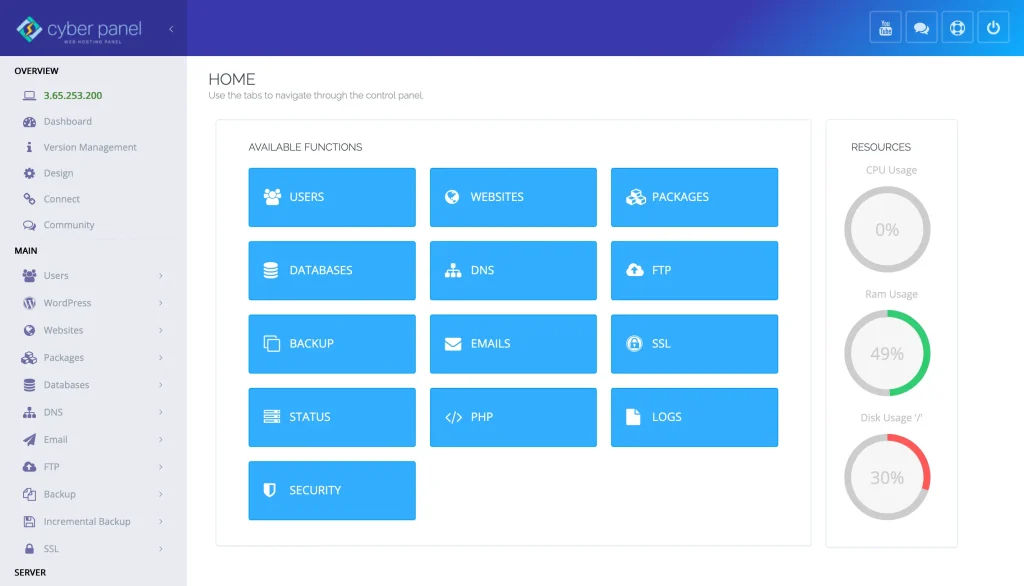Do you know what one command is essential for developers, system administrators, and security analysts? We are going to reveal today. It is about the dmesg Linux. No doubt, it has a minimalist appearance. The dmesg Linux offers exclusive insight into the kernel’s internal workings, boot-time events, hardware diagnostics, driver logs, and system anomalies. As kernel versions continue to evolve, it is essential to master the dmesg command in 2025.
We all know how Linux system complex is and security sesitive, though. We are going to define dmesg, how to use the dmesg command in Linux, and how to interpret its output. It can mean the difference between quick issue resolution and costly downtime. This guide is a deep dive into dmesg in Linux.
Let’s explore the way to unlock the full potential of Linux dmesg!
What is dmesg in Linux?
dmesg stands for ‘diagnostic message’. The dmesg command is a diagnostic utility in Linux. It is used to examine the kernel ring buffer. This buffer has low-level system messages. It fetches and prints kernel messages. This provides visibility into what the kernel is doing at a very granular level.
Key Features of dmesg Linux:
Here are the functions and features of dmesg Linux:
- It tracks boot-time messages.
- It also identifies hardware initialization issues.
- dmesg Linux logs driver loading or unloading activities.
- It also detects kernel panics, crashes, and interrupts.
- It can debug system startup and shutdown problems.
- It monitors USB, PCI, and SATA device logs.
Importance of dmesg Linux in 2025
There is increased adoption of virtual machines, Docker containers, and security-hardened kernels. It is need to have low-access to kernel events is vital. The dmesg command interacts directly with kernel outputs. Thus, the dmesg Linux command is essential for root-cause analysis.
Get exclusive access to all things tech-savvy, and be the first to receive
the latest updates directly in your inbox.
How Does the dmesg Command Work in Linux?
The kernel records events in a ring buffer when a Linux system boots or undergoes hardware changes. The dmesg command displays this buffer.
Syntax:
dmesg [options]
The command without options prints the entire kernel message buffer.
Example Output:
[ 0.000000] Linux version 5.15.0-91-generic ...
[ 0.123456] ACPI: Power Resource [FN00] ...
[ 2.345678] usb 3-2: new full-speed USB device number 2 ...
Use Cases of dmesg in Linux
Now, let’s discuss common use cases of dmesg in Linux:
Analysis of Boot Errors
The dmesg command is able to reveal the kernel’s perspective if your system hangs during startup or shows strange behavior post-boot.
To Debug Hardware Issues
Kernel logs through dmesg point to IRQ conflicts, driver crashes, or initialization failures. No matter whether it’s a failing USB device or an unstable GPU.
To Monitor Real-Time Kernel Events
You can use -w linux command (watch mode) to keep dmesg open for live output as events happen.
dmesg -w
This command is important when plugging in devices or simulating hardware events, as it shows live log entries.
Advanced Filtering with dmesg
You know that large systems generate thousands of messages. But to navigate this data effectively, filtering becomes crucial.

Use grep:
dmesg | grep -i usb
Combine with less:
dmesg | less
View only errors:
dmesg --level=err
dmesg Output Log Levels
Linux categorizes kernel messages into different severity levels:
| Level Code | Severity Type |
|---|---|
| emerg | Emergency (system unusable) |
| alert | Immediate action required |
| crit | Critical condition |
| err | Error condition |
| warn | Warning condition |
| notice | Normal but significant |
| info | Informational message |
| debug | Debugging-level message |
Use --level to filter logs by severity.
Use of dmesg in Security & Forensics
The dmesg has thus developed into a vital tool for security audits in 2025, almost a benchmark for transparency of low-level system activities.
Key Scenarios
- Unauthorized device monitoring- Real-time detection of suspicious USB connections.
- Auditing for kernel exploit- Investigate for traces of crashes or any odd system calls.
- Rootkit detection- Check for unusual activity or kernel modules.
How Do dmesg and journalctl Differ?
| Feature | dmesg | journalctl |
|---|---|---|
| Log Source | Kernel ring buffer | systemd journal |
| Persistence | Non-persistent | Persistent |
| Access | Root (or sudo) | Any user (with journal ACLs) |
| Focus | Hardware/kernel | Application/system-wide |
While journalctl gives a broader picture, dmesg offers surgical-level insights.
Best Practices for Using dmesg linux Effectively
Here are a few best practices to use dmesg linux effectively:
Use sudo to get full output:
sudo dmesg
You can use -T for human-readable timestamps:
dmesg -T
You should log the dmesg output regularly for auditing:
dmesg > /var/log/dmesg_backup_$(date +%F).log
Cleaning the buffer:
sudo dmesg -C
Troubleshooting & Help with dmesg
Now, we are going to have some real-life examples where dmesg command helps:
Example 1: USB Not Recognized
dmesg | grep usb
Output:
usb 1-3: device descriptor read/64, error -71
This command helps indicate a power or compatibility issue.
Example 2: GPU Driver Fails
dmesg | grep -i nouveaunouveau 0000:01:00.0: unknown chipset, unable to load
The Role of dmesg in Linux Debugging Automation
dmesg is becoming more frequently used in conjunction with system monitoring tools and CI/CD pipelines for automated diagnostics. For instance:
- Testing frameworks in DevOps pipelines can fetch the dmesg output after deployment.
- Automatic signature parsing is done using dmesg during kernel development.
- In IoT devices, embedded systems log dmesg to persistent storage for debugging with remote support.
CyberPanel and dmesg Linux

Though primarily known as web hosting control panel and server management tool, a little knowledge on dmesg greatly enhances any activity CyberPanel is engaged in, especially if the host suffers hardware problems. For example:
- A failed disk or RAID event seen on dmesg can alert you to potential server problems even before CyberPanel begins throwing server errors.
- Is there trouble with your Docker installation or SSL? Dmesg can show you any kernel problems that are not sufficiently highlighted by CyberPanel.
- Making checks for dmesg part of your CyberPanel server audits promotes greater uptime and health of the system.
FAQs
Define dmesg in Linux?
It is a command-line tool in Linux that prints the kernel ring buffer.
What is dmesg -w Linux command and its use?
The command ‘dmesg -w’ is used to monitor kernel messages in real-time. This helps track events as they occur, such as device plugins or driver issues.
Is there any difference between dmesg and journalctl?
Yes, both are different. The dmesg command can only read kernel messages. While journalctl accesses all system logs, including application, kernel, and services logs.
Can I clear dmesg logs?
Yes, you can. Use ‘sudo dmesg -C’ to clear the kernel ring buffer. It is very useful when you want to isolate new events.
Wrapping Up!
To sum up, utilizing dmesg Linux gives you a better position in system diagnostics, security analysis, and on-the-spot monitoring. Whether you are troubleshooting device errors, running forensics, or constructing a strong hosting architecture using such tools as CyberPanel, the dmesg command in Linux is your very best insight into the implications of the kernel.
Start integrating dmesg into your workflow today!



